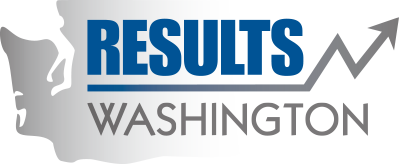Archived: Suicide death rate
Suicide is a serious public health problem in Washington State. The state’s 2015 suicide rate of 15.6 per 100,000 residents was 17 % higher than the national rate of 13.3 per 100,000. From 2011 to 2015, 5263 Washington residents died from suicide. They ranged from 11 to 101 years old.
On average, three people die by suicide every day. In an average week, there are 65 hospitalizations from self-inflicted injury. Recent survey data tell us that more than 4 percent of adults and 20 percent of 10th graders in Washington have seriously considered suicide in the past year. A web of biological, psychological, social, environmental and situational factors influences suicidal behaviors. Risk factors include childhood trauma, substance abuse, untreated mental health problems, residential instability, unemployment, limited economic resources, social isolation, and access to lethal means while at risk. Many people cannot get behavioral healthcare because of provider shortages, the stigma associated with mental illness or the cost of care.
At every point over the past 10 years, Washington’s age -adjusted suicide rate was higher than the national rate. This is true back to 1980.
Suicide rates vary in different parts of Washington. When rates are compared, sometimes a small difference may be “statistically significant,” meaning the difference is very unlikely due to chance. From 2011to 2015, King County’s suicide rate was below the state rate, but it has the largest population and the highest number of suicides. Conversely, Ferry County has the highest suicide rate, but the smallest population and a low number of suicides. Also, county-level data do not always accurately reflect suicide losses in communities. Between 2011 and 2013, Clark County’s Battle Ground School District (18,000 pop.) lost seven students to suicide. This was not apparent from the county data.
Suicide deaths are just the tip of the iceberg in Washington, and experts generally agree that suicide and suicidal behavior are underreported. For every suicide death, there are an estimated 225 adults who seriously consider suicide. Currently, Washington is attempting to develop data tracking methods on those who attempt suicide but do not receive medical attention or are released from the emergency department without being hospitalized.
Washington is critically engaged in developing community and policy solutions to suicide. The first across-the-life-span Washington State Suicide Prevention Plan was released in January 2016. It contains goals and recommendations to prevent suicides in Washington. Across the state, advocates challenge communities and policy makers to face the problem of suicide head-on. Suicide prevention coalitions provide training and advocacy. Student-led prevention clubs bring peer education to schools and colleges. Support groups, those with lived experience, help bereaved families and friends navigate grief and empower members to become part of the solution.
Behavioral healthcare providers treat patients at risk of suicide and save lives. Tribal governments and military suicide prevention coordinators bring culturally tailored solutions to their communities. Academic researchers, public health professionals and community-based organizations provide expertise and resources statewide and beyond our borders. And, our state has established suicide prevention training requirements for behavioral health and primary careproviders—the first state in the country to do so.
Washington’s efforts are focused in 4 directions:
Healthy and Empowered Individuals, Families and Communities
Suicides can be reduced by recognizing this is a public health issue requiring public participation, nurturing social and emotional health, and respecting community influences and cultural practices.
Clinical and Community Preventive Services
Programs involved are more focused than community empowerment initiatives but less focused than clinical treatment. They spread awareness, take action and promote helpful resources.
Treatment and Support Services
These systems improve the accessibility, appropriateness and continuity of care and provide supports that can be put in place after a suicide loss.
Suicide Surveillance, Research and Evaluation
Washington’s state agencies, health systems, suicide prevention programs and researchers work to learn about suicide and how to prevent it. They generate and examine information about the number of lives lost to suicide, and the causes and effects of suicide loss and suicidal behavior, to help improve suicide prevention programs.
Are you concerned someone else might be at risk of suicide? This person is fortunate you’re paying attention. Here are some easy steps you can take to help:
Look for warning signs. Some common warning signs of suicide risk are listed on page12 of the Washington State Suicide Prevention Plan.
Show you care. This looks different depending on who you are and your relationship, but let the person know you have noticed something has changed and it matters to you. If appropriate, let them tell you how they’re feeling and why.
Ask the question. Make sure you both understand whether this problem is about suicide. “Are you thinking about suicide?”
Restrict access to lethal means. Help the person remove dangerous objects and substances from the places they live and spend time.
Get help. This person may know who they want to talk to (a therapist, their guardian, their partner). You can also call the National Suicide Prevention Lifeline 24 hours a day, seven days a week, at 800-273-8255.
Don’t feel like talking on the phone? Try Lifeline Crisis Chat or the Crisis Text Line at 741741.
